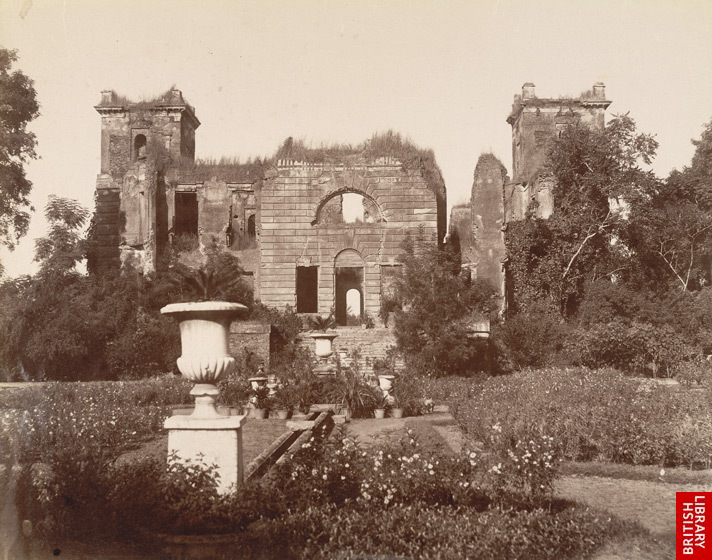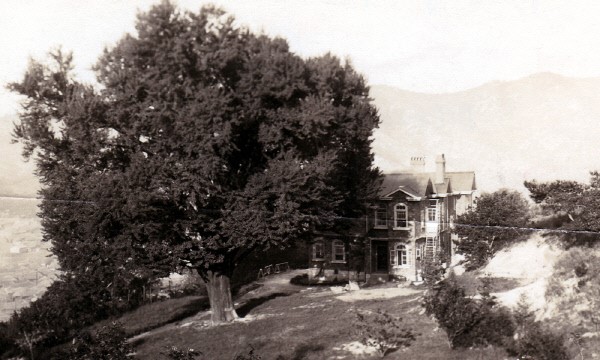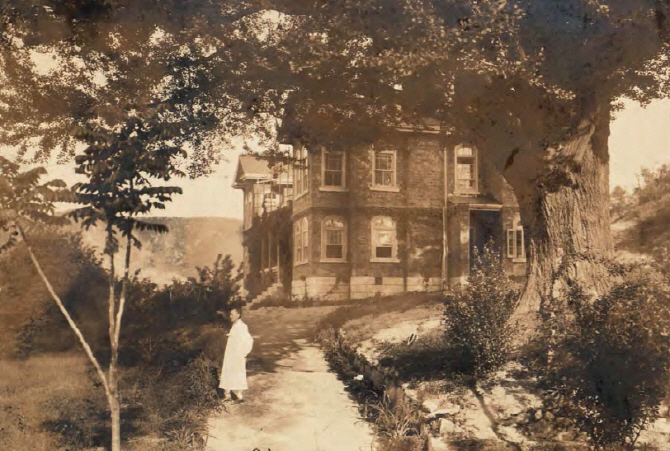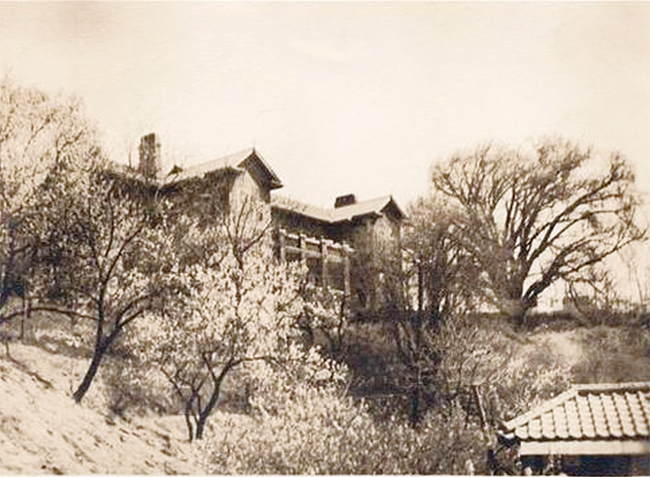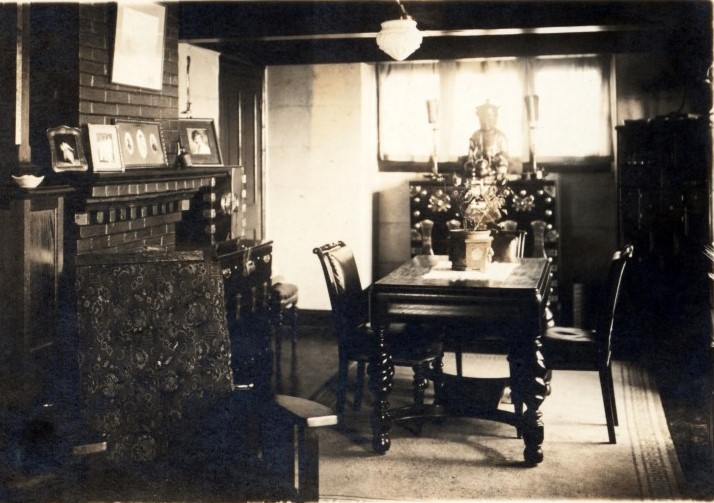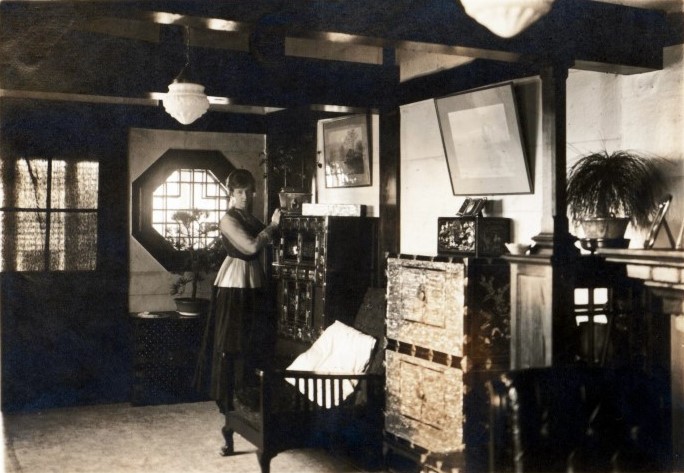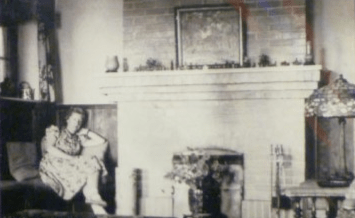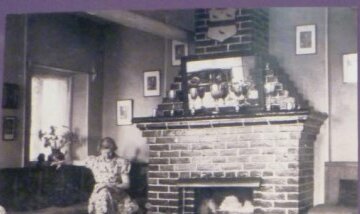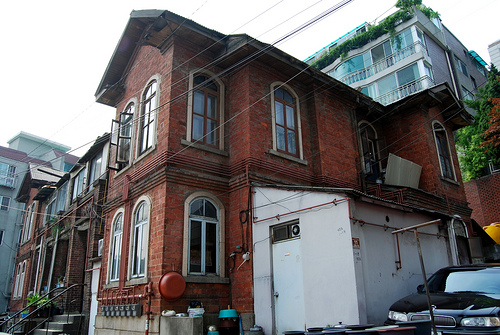Dilkusha In India and in
Seoul
The house Dilkusha Kothi (heartís delight) near Lucknow in
north-eastern India (left) was constructed around 1800 -
1805, designed by the British Major Gore Ouseley, an entrepreneur,
linguist and diplomat, for the Nawab of Oudh, Nawab Saadat Ali Khan. The design is usually said to bear a startling
resemblance to the style of Seaton Delaval Hall in Northumberland,
England (right). The park and house were a center of fighting during the
Indian Uprising of 1857-8 but the house may have finally fallen
into ruins rather later, at least by the late 1890s. The park
remains until now.
Dilkusha
in Seoul
First built by Bruce and Mary Taylor in 1923, the house was
located on an open hillside overlooking Seoul, beside a huge, very
ancient gingko tree. It received its name because Mary Linley had
visited the ruins in Lucknow while she was touring India as an
actress, and had resolved to give the name to her own house one
day. Read Mary's long
description: building the house, its interior (below
left), and its rebuilding after destruction by fire.
Struck by lightning on July 26 1926, while the owners were in
California, the house was seriously damaged, the entire contents
of the attic, a fine collection of antiques, was lost, as was the
upstairs floor.
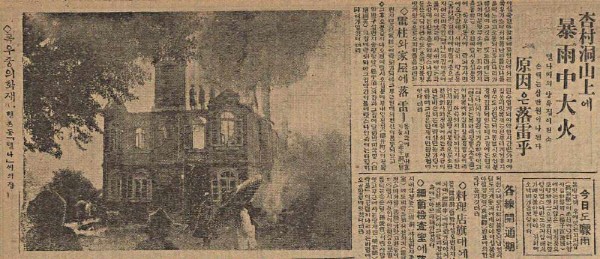 |
After the 1926 fire, Bruce Taylor's brother Bill supervised the
rebuilding as best he could, and the family resumed life there in
the autumn of 1929. From 1927-29 the
Boydell family from Australia lived in the house. The
Grigsbys lived in rooms upstairs 1929-1930. Read Faith Norris's
recollections of the house (she was only nine years
old and her mother told her nothing about the fire, her 'memories'
are mostly quite wrong). The fine garden with the old tree was
especially memorable. There was a spring which the Koreans living
in the neighborhood to the west of the house had always used and
to which the Taylors had to grant access.
The house from the East ( above and below left, with the gingko)
and from the West (below right)
Mary Taylor was detained in the house for some weeks in late 1941
after the attack on Pearl Harbor, then obliged to leave Korea. In
the following year the house was stripped of its furnishings,
which were sold by the Japanese authorities and the proceeds put
into a bank account "for after the war.". When Mary returned to
Seoul to bury her husband's ashes in 1948, the stripped house had
been somewhat repaired; it survived the Korean War, but in the
following decades Seoul changed very much and the garden (though
not the gingko) disappeared. The house was inhabited by several
different families although it seems that none had any legal title
to it. It became increasingly run-down. The house has now been
taken over by Seoul City and after it has been restored, late in
2020 it will become a museum dedicated to the Taylors in the care
of the Seoul Museum of History. The main reason for this interest is the
unique role at the time of the 1919 March 1 Independence Movement
claimed for A. W. Taylor by his wife in her memoir Chain of Amber.
A. W. Taylor and the March 1 Korean Independence Movement: some
questions
Mary and Bruce's son, Bruce Tickell Taylor, visited
Seoul
and Dilusha in 2007 at age 88. Bruce was born in Severance
Hospital, Seoul, the day before the Independence Uprising of March
1, 1919. His mother, Mary Linley Taylor, in her book Chain of
Amber page 156 (as well as Bruce Tickell Taylor early in his
memoir Dilkusha by the Ginkgo Tree) claims that her
husband, visiting her in the hospital that evening, picked up the
baby and discovered copies of the Declaration of Korean
Independence hidden beneath it, some having been printed in the
hospital cellar in preparation for the next day's uprising. She
writes that he gave a copy to his brother Bill and sent him off to
Japan, hiding the text in the heel of his shoe, to transmit the
text to the American press (fearing censorship inside of Korea).
This, they both claim, was the initial source of western knowledge
about the March 1 uprising.
However, the story found in Mary's book and repeated by her family
is not very accurate. Certainly, Taylor was acting a correspondent
for Associated Press, mainly because of international interest in
the funeral of Emperor Gojong. He was also aware of growing
demands for independence among the Koreans and he was possibly
(but not certainly) the author of the first articles
about the March 1st Declaration published in North America on
March 13. However, the text quoted in those articles is not that
of the 'official ' declaration drafted by Choi Nam-seon, signed in
a Seoul restaurant, and read in Pagoda Park on March 1, but a
different text, composed and disseminated by a group called The
Korean National Independence Union. It seems unclear why there are
2 or even 3
different Declarations issued simultaneously, (an earlier
3rd text was released in Tokyo on February 8) and also various
suggestions of how they were disseminated, but the story of either
text being hidden beneath a new-born baby seems unlikely. The
Independence Union's Manifesto was first smuggled to Shanghai
where it was telegraphed on March 9 to Ahn Chang-ho, president of
the Korean Association of North America, in San Francisco. It is
quite possible that from there it was sent out to the North
American press. The translated
text of the 'official' March 1 Declaration of Independence
was carried to the United State by the newspaper owner V. S. McClatchy hidden in his money
belt (he
had been on the streets of Seoul on March 1) and published there
later in March. There is no indication of who might have
translated it.
On page 157-8 of Chain of Amber, Mary goes on to claim
that on March 1 (she is not clear about the chronology), the 'next
morning' after discovering the hidden Declaration(?), her husband
told her that 'yesterday' he had gone 'to Suwon and Chunju,' first
alone and then with the British and American Consuls and had taken
photographs of the Japanese setting fire 'to whole villages,' and
that they had locked Christians in a church then shot them through
the windows, and "this practice spread the length of the
peninsula." She claims that "during the (following?) morning" he
went alone to visit Governor General Hasegawa, showed him the
photos and demanded an end to the massacres, which was done.
Unlike his mother, Bruce T. Taylor knows the name of the place
where the most notorious massacre occurred, Ji Amri, with Christians locked
inside a church which was then set alight. He also knows that his
father had gone with an American consular official and H. H.
Underwood. Neither of he nor his mother seem to realize that the
atrocities happened much later, more than a month after March 1, on April 15.
It is a well-known fact that the foreigner who took a photograph
just after the Jeamni incident was Francis
Scofield, and the most extensive account of all these events
is that published in 1920, in Canadian journalist F. A. Mckenzie's
Korea's Fight For Freedom
Chapter 14 and Chapter
15. There are ample
records of the visits made by missionaries and consuls with
A. W. Taylor to the site of these atrocities, and of the
representations made to the Governor by missionaries and consuls,
it is incorrect to claim that Taylor acted alone. The best source
is The
Korean Situation : authentic accounts of recent events
by the Federal Council of the Churches of Christ in America.
Commission on Relations with the Orient. 1919.
